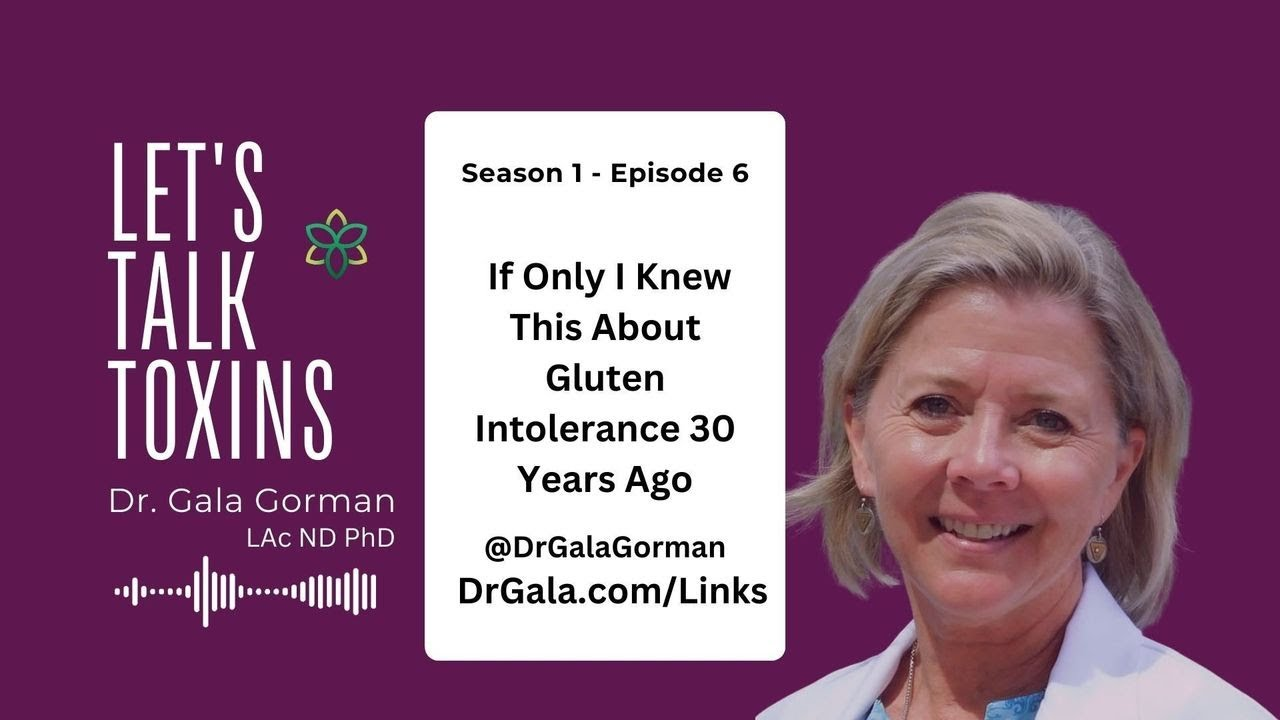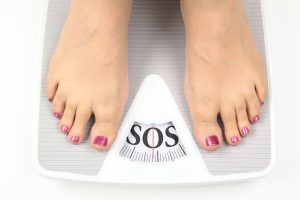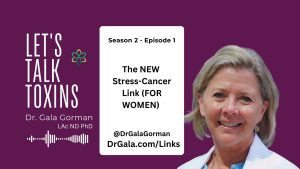NOTE: A machine generated this transcript. Please be aware that it may contain occasional errors in punctuation and spelling.
I will share that we had a chef that was making homemade bread for us with gluten-free flour. And I just knew that I was having some kind of reaction and I didn’t think that it could be this bread because I knew her. I knew the quality of the ingredients that she was using and so I actually ran a food sensitivity test with blood work, which is a fairly costly thing to do because I just wanted to really know what was going on.
Welcome to the Let’s Talk Toxin show. Imagine enjoying your meals without worrying about a gluten reaction. In today’s episode, we’re discussing what I wish I knew about gluten intolerance 30 years ago. If you’ve ever felt bloated or fatigued after eating bread or pasta or experienced unexplained skin issues, these could be signs of gluten intolerance. The damage to our gut accumulates over many years.
In this episode, we’ll learn how to reverse course to heal your gut. And if you’re new here, I’m Dr. Gala Gorman, a licensed acupuncturist, naturopath, and author of What’s Your Kryptonite? I wrote the book to help women understand the effects of chronic stress that’s turned toxic. In the book, I share the MOLT Method™ I developed it to make it easy to shed stress along with the accumulated toxicity. Just like any other creature in nature that’s outgrown its trappings. So that you can cruise through midlife and beyond symptom-free. So that you can put an end to health issues like chronic fatigue, insomnia, mood swings, and even weight gain.
So MOLT in this case is an acronym. The T stands for toxins. I can say with confidence that every symptom is caused by accumulated toxicity. I evaluate 12 categories of toxicity when I’m working with someone to unravel a health mystery.
Our world is full of man-made substances that our bodies were not designed to deal with. Coupled with this toxicity is an overwhelming amount of toxic stressors the body was designed to manage, and it’s no wonder women find themselves playing whack-a-mole with symptoms.
In this segment, I share information from research studies related to toxicity. You can think of it as a Toxin Trend. So, in this report, it’s a great example of a Toxin Trend. It’s from a study from the University of Michigan and they found that exposures to heavy metals like mercury, lead, and cadmium could disrupt hormone levels in midlife women.
The research that was part of the study of women’s health across the nation indicates that higher mercury and lead levels are linked to lower estradiol and higher follicle-stimulating hormone levels. And these hormone changes could impact bone health and cardiovascular risk as women age. And, you know, osteoporosis is a big risk for women as we enter midlife and beyond.
Couple that with the hormone disruption that we’re just naturally experiencing from menopause, and it’s interesting that maybe this heavy metal component is what causes a lot of women to have a really bumpy ride through menopause. Some of the ways that we get an accumulation of heavy metals are, for example, eating raw foods. When we eat a lot of raw foods, there, a lot of times come with a lot of additional toxicity because it’s hard to clean them really thoroughly without essentially ruining them.
Salads are delicious; I love a great salad too, but it’s really important that you choose organic ingredients, especially if you’re eating them raw. That’s not a hundred percent guarantee that you’re not still going to be introducing some chemicals and potentially heavy metals, but it’s going to significantly reduce the load.
I will share that I scan myself and everyone that I work with for a bioenergetic disruption. And so, I scanned for a metal load essentially a heavy metal load. And we would naturally think that it’s mercury; that’s what we hear all the time. And so I assumed that it was mercury, but I was curious and I actually ran a formal lab test to get confirmation of the results. We do that sometimes if you really are skeptical and you really feel like you need some sort of corroborating lab tests. Lab tests are more expensive and aren’t always spot on as far as corroboration goes.
But in this particular case, it was really interesting because the lab test showed that I did have an accumulation of some mercury, but that wasn’t the real problem. The real problem was beryllium, which is an odd heavy metal often accumulates with people who deal with computers a lot. I’m on the computer all the time. And so it became more critical for me to really manage the toxicity that I was absorbing from working around computers a lot.
Just know that getting the information you need to really pinpoint what the problem is is really critical. It allows you to not just scatter shot with a detox effort trying to detox the culprit and maybe you’re not even really addressing the thing that’s truly causing the problem.
Chapter 12 in my book What’s Your Kryptonite? is dedicated to helping readers manage what I refer to as Tricky Toxins. Our bodies are bombarded with toxicity, so we have to learn to manage it. Just comment “tricky toxins” and we’ll send you a link where you can download the chapter for free. If commenting isn’t convenient, go to DrGala.com/links and sign up for my Wellness Weekly newsletter. You can respond to any email you receive from me with “tricky toxins.” then we’ll send you a link.
Every suggestion you’ll hear from me has been tested in the trenches, and that includes saying no to symptom suppression. Over the past four decades, I’ve developed processes that work sustainably. Typically it requires a combination of approaches that I’ve synthesized to address the health issues that show up repeatedly for many women.
In this segment, I’m opening the kimono to share how I was challenged to apply my suggestions. I’m Walking My Talk. And here’s an example.
This summer, you may have heard me mention I spent several months in Florida. And anytime we’re away from home, it is not uncommon for us to stray from our normal diet, our normal routine. And so essentially I ate a summer of vacation food. I didn’t do terrible, but definitely things accumulated. And then, as soon as that period was over, my husband had surgery. And we’ve been a month or so in his recovery. So it’s been really four to six months where I’ve not been on my normal sort of program. And so the effects have accumulated, I have accumulated about 10 pounds. That would not have been welcome was I really paying more attention?
What I’ve really learned through this is that it’s so much easier when we catch it earlier. You know, I didn’t have a scale where I was; my scale was at home. And so it became really sort of problematic. If you are anything like me, my weight can fluctuate a few pounds on any given day, depending on what I’ve got going on. So, you know, I don’t worry too much if it’s up or down a couple of pounds. But once it gets beyond three to five pounds, that’s going to take a little more than just doing a better job for a couple of days. That’s going to take a concerted effort of a week or two, and then once it accumulates to 10 pounds, now you’ve got a bigger problem that needs to be solved.
That was something a lesson for me to make sure that I catch it earlier and figure out a way to make sure I’m catching it at more like the five-pound point rather than letting it escalate to 10 pounds. But what I found really amazing is that I applied my Human Energy System Reboot. And I encourage everyone who watches or listens to me to use this little program that I put together, to make it easy for us to DIY, do this at home.
It’s going to be a little bit of effort. It’s gonna be a little uncomfortable, but this reboot process I put together includes seven ways. And within those seven ways, each of the seven ways has five plays. And so you mix and match and play at your level, and it really is an effective program to help you unravel this accumulated toxicity fairly quickly.
Definitely accomplished a lot just in one week of practicing and then it also does a really great job of reminding you the kind of things that you need to be doing long-term. If you’re curious about this human energy system reboot program, you can find a link to learn more about it at DrGala.com/Links.
Now, let’s talk about things I wish I had known about gluten intolerance 30 years ago. And when I’m done, drop a comment and let me know if you’ve experienced gluten intolerance and what has helped you manage it. So let’s talk first about the signs of gluten sensitivity.
The first sign I notice is that it becomes hard to swallow, what that sensation is actually the lining of your digestive tract all the way up to your esophagus getting sort of inflamed or swollen. And then it makes it really difficult to swallow. One of my husband’s tennis buddies told a story about how he was just out with friends one night and they were eating pizza and he just literally, you know, his airway shut down and he ended up in the emergency room and he was in the healthcare field.
So, he knew that it was a significant problem and that he needed to seek professional help. And the people in the ER actually told him that they believed he had had a reaction to gluten, that he had a gluten intolerance and he cleaned up his diet, looked great when I saw him. It was really a great lesson for how this kind of sensitivity accumulates and develops later in life. This is not something that you’re necessarily your born with; that irritation accumulates.
It’s also often intermittent and that makes it hard to diagnose. So if it doesn’t happen every time, we’re going to talk in a moment about some of the reasons why that happens. But if you have a problem, even if it’s intermittent, don’t just dismiss it and assume that it’s not a gluten sensitivity.
The next thing I want to just mention here is that not all gluten is created equal. If you truly have a gluten intolerance, a gluten allergy, if you have celiac disease, I’m not really speaking to you here. The only thing I will say to those of you with a true autoimmune condition or a true allergy is that it is possible to reverse that. But you would need to be much more careful because of the severe reaction that you would have trying to essentially desensitize yourself to it.
Oftentimes, grains of all sorts, honestly it’s not just wheat are harvested before they’re ripe. And so when things are harvested before they’re ripe, then what happens is nature’s ripening process is not fully realized. And then, we try to artificially ripen things after the fact and it leaves a lot of native toxins in whatever the thing is, whether it’s a grain or even a vegetable.
That’s a really key thing to recognize; if you are buying farm-to-table and somebody picked it ripe and brought it to the farmer’s market and you picked it up and took it home and put it in a salad or cooked it, you’re probably going to have a very different experience than something that’s made its way through the food chain.
One of the other things that’s often done to grains, in particular, is they are sprayed with glyphosate, more or less as a preservative to keep those grains from growing mold and that sort of thing in the process of getting from the field to your kitchen. And sometimes they do this even when something’s been grown organic. So it’s very important for you to know where you’re sourcing these things from, and to not just trust that because it’s organic, it is free of any chemicals.
The next thing I want to really point out here is that a lot of times when we’re trying to avoid gluten, we turn to alternate grains. These alternate grains, in many cases, were not really designed to make a true baked good out of. It’s one thing to use it to just thicken something, to make a gravy or something like that. But when we try to use almond flour or rice flour in concentrated amounts, that really is hard on our digestion. So sometimes we’ll even develop a sensitivity to nuts, as an example, if we’ve turned to these nut flours as an alternative to a grain.
I will share that we had a chef that was making homemade bread for us with gluten-free flour. And I just knew that I was having some kind of reaction and I didn’t think that it could be this bread because I knew her. I knew the quality of the ingredients that she was using and so I actually ran a food sensitivity test with blood work, which is a fairly costly thing to do because I just wanted to really know what was going on. It turned out that I really had a yeast overgrowth. And sometimes, we think that we will just see signs of candida or yeast. But that was not happening for me. It was not showing up in a way that we would normally correlate with yeast accumulation.
I was talking to her about it and she looked really shocked when I shared this with her. She said that I was not the first person that had said this to her in the last month or two. She said that a lot of chefs, when they use gluten-free flour, they add two to three times the amount of yeast to sort of compensate for the gluten not being in the flour. So essentially you’re eliminating gluten, but you’re creating a yeast overgrowth.
The thing I can recommend best for you is to just use the real thing and to use it in moderation. You just want to avoid baked goods as much as possible unless the ingredients truly are gluten-free naturally. And then, if you really want to consume bread, make sure it’s super high-quality bread. It’s best if the flour is imported; that tends to have less of these chemicals that we use in the United States and use the real thing and really make sure it’s good because you’re not going to have it very often. You want to make sure you really enjoy it.
I have a couple of things I still want to share with you so that you can reverse the damage from years of consuming gluten so that you can move towards optimal wellness. But remember, you can get the Tricky Toxins chapter of my book, What’s Your Kryptonite? for free. Just comment “tricky toxins” and we’ll send you a link where you can download the chapter. If commenting isn’t convenient, go to DrGala.com/Links and sign up for my Wellness Weekly newsletter. You can respond to any email you receive from me with “tricky toxins” and we’ll send you a link.
Now, let’s continue with a couple of additional things I want you to know about gluten and grains. And don’t forget, when I’m done, drop a comment and let me know if you’ve overcome your intolerance and how you did it. So, I shared with you a moment ago the risk of using nut flours and that these nut flours are super concentrated. And then if we’re using alternate grains, a lot of times these alternate grains really have a lot of yeast in them, and then we end up with a different problem.
In my Fierce Five, which is one of the seven ways in the Human Energy System Reboot, I suggest that you eliminate just for a week gluten, dairy, yeast, sugar, and alcohol. Yes, that’s a little challenging, but you’ll find that you’ll see really surprising results even in just a few days.
A lot of people will turn to this cauliflower crust option now when they’re not consuming regular crust kind of things. And I made that mistake too for a short period of time, but the way they glued together the cauliflower flour is with dairy. And so now you’re going to get way more dairy than you need to be consuming. Not to mention the fact that cauliflower ground down to a powder essentially is probably not really the way it was designed to be used. So cauliflower crust really isn’t a great option for you either.
So what do you do to avoid glutens and grains? What’s the best sort of approach? Well, if you really don’t feel comfortable completely eliminating gluten or grains—and I understand; they really are a staple of the American diet—it’s no plate is complete without some sort of starch and that’s typically some sort of grain.
It could be a potato; potatoes end up being much better for us, honestly. Especially if you turn the potato into what’s known as resistant starch and the way we do that is we cook the potato and then we cool it all the way down. Typically, you’ll make the potato the day before cooling it in the refrigerator and then reheat it the next day when you want to eat it. And that really reduces the insulin spike that the potato creates. This can really help and also eliminates all these reactions from the gluten and grains.
Just a reminder, as I mentioned, a lot of times, we can get flour that is imported and organic, and this will tend to not cause the same sort of reaction that something manufactured here in the United States would do.
The other thing too, I will say is that if you’re really skeptical and can’t bring yourself to eliminating these gluten and grains without really having some proof that this is a problem for you, I suggest that you get tested. Yes, it’s going to be a little costly, but that peace of mind and the potential improvement to your health when you know that you really have to make a change is priceless.
Just a quick reminder is that, it’s not definitive necessarily. Sometimes, you’ll get a false negative or even a false positive. Sometimes, the toxicity won’t register. What I typically recommend is that you’ll want to do something like my Human Energy System Reboot for a week before getting the test, just to turn the inflammation levels down in your body so that when the lab test is conducted, the things that are really a problem are going to flare more easily when the noise is turned down. That’s just a little tidbit there that if you’re going to do some sort of toxicity test, it can be really helpful to do at least a week of cleanup before you do that.
The answers I give to questions I receive quite often apply to and would be helpful for most women. I have accumulated a few related questions and I’ll answer them in this segment. I call it “Ask Away.” If you’d like to ask a question, I created a form so that it’s sure to get answered, and your question could be shared in a future episode, helping many other women. So comment “QUESTION” and we’ll get you a link to the form. If commenting isn’t convenient, go to DrGala.com/Links and sign up for my Wellness Weekly newsletter. You can respond to any email you receive from me with “QUESTION” and we’ll send you a link.
What are the most common symptoms of gluten intolerance?
Probably the most common symptom is digestive disturbance, which really is not an easy way to narrow down that your problem is gluten intolerance because there’s a lot of things that cause digestive disturbance. But if you’re finding that you’ve got an irritation maybe inside your mouth lining in your oral cavity, a lot of times that will be caused by eating something that really is irritating your digestive system.
Digestion starts in the mouth, and then your digestive system essentially is skin on the inside of your body. If your esophagus is being restricted, if you’re having difficulty swallowing, just know that irritation is happening all the way through your digestive system.
When you start seeing the signs, please don’t make the mistake of suppressing the symptoms. Rather, you want to take them really seriously and get to the bottom of what’s causing the problem and eliminate that from your diet. That constant irritation has your immune system just fired up; your sympathetic nervous system is activated, which means your parasympathetic nervous system is offline. No digestion is happening, very little repair and maintenance is happening, and things are just being deferred. The can is being kicked down the road and that’s creating dis-ease and dis-ease leads to disease in the long term.
How is gluten intolerance different from celiac disease?
Celiac disease is an auto-immune condition, but it’s really just an escalation of the problem. If you have an issue with gluten and it has gone unaddressed for an extended period of time, it’s not uncommon for that to escalate to celiac disease. I will say though, that in many cases, it will require some additional trigger—a weakness or vulnerability in your immune system—that will kind of be the tipping point where your immune system just can’t tolerate it anymore. It’s really important if you are noticing these signs that you catch it at the earliest possible moment and start to reverse the damage.
Yes, do I realize it’s inconvenient, uncomfortable, and makes it a challenge to find compliant things to eat? Yes, yes, yes, yes, and yes. But it’s definitely worth it. Your health is your greatest asset. If you are skeptical and you’re not really sure this is the problem and you are one of those people who won’t take it seriously until you have confirmation, then please make sure that you get tested for food sensitivities. The gold standard is a comprehensive blood work test that tests a lot of different substances. There are other tests you can take, but just know this is something that is damaging your internal organs. It’s leading to gut deterioration, leaky gut, and will cause all kinds of issues long term.
Can gluten intolerance develop later in life even if I’ve never had issues before?
I share a story about my husband’s tennis buddy who was in his late 50s, I imagine. When he finally got to the point where he had a reaction to gluten strong enough that he ended up in the emergency room with a restricted airway. Absolutely these issues can accumulate to the point where its creating severe problems as we age. I imagine that there were signs along the way but those signs either went ignored or were suppressed with some sort of symptom suppressor.
And so, I really urge you if you are using a symptom suppressor of some sort, discontinue use immediately unless it is a prescription medication. And in the case of a prescription medication, then I would send you back to that prescribing doctor and ask you to work with that prescribing doctor to help you get off that medication. You’re going to do that by eliminating gluten and some of the other common things that I find people have accumulated sensitivity to.
If you’re wondering more about that, I suggest that you look into my Human Energy System Reboot. Avoiding what I refer to as the Fierce 5, is one of the seven ways we use in the Human Energy System to reboot our internal processes and systems. This accumulated toxicity is causing stress, and stress also allows toxicity to accumulate.
Stress is a real cornerstone of a problem with any sort of disease. Over 90% of disease research has shown is directly correlated to stress, and I believe that number is actually higher because they’re really not factoring in all the ways stress shows up. What you’re seeing is that you have managed the stress, the toxic stressors, the regular stress until the point where the symptoms are showing up. Once symptoms start showing up, that’s not the first sign of it; that’s just the sign that your body’s finally hit its limit. Please don’t take that sign or symptom lightly; that is basically a big flashing yellow warning sign.
What hidden sources of gluten should I watch out for in processed or even healthy foods?
Well, one of the ingredients that’s used a lot in even healthy foods is malt. Malt can sometimes be called malt barley, and malt is not free of gluten. In fact, rye and barley both contain gluten. So you really can’t just turn to alternative flours for bread and think you’re going to completely eliminate gluten. I know when everybody got into avoiding wheat, a lot of people turned to spelt. Spelt is probably a healthier flour, but the gluten was still there. You might have had a little bit of improvement in the short-term, but long-term, the improvement was not there. What we found over the years is that it really isn’t just the wheat; it’s the gluten and also the chemicals used in growing and harvesting the grains.
Another thing that is really kind of hard to get your head around sometimes is that soy sauce has gluten in it. If you’re turning to Asian food, trying to eliminate wheat and dairy, turning to Asian food is one of the easiest ways to do that, but they use soy sauce in just about everything. Finding a restaurant that will use alternative soy sauce can be important if you really need to eliminate gluten 100 percent. I will say that a lot of us can consume a little bit of gluten and it really doesn’t bother us. If they put a little bit of soy sauce in whatever they’re cooking, it may not be enough to cause irritation for you, but just know that if you can avoid soy sauce, you want to do that as well.
The most important thing is you need to learn to read the labels. If you see something you’re not sure about, then you wanna do a little investigating on your own and make sure this is not a hidden way that any of the Fierce 5 are sneaking into your diet.
Is it necessary to avoid all grains if I’m gluten intolerant or are some still okay?
Well, rye and barley, for example, still have gluten in them. You definitely can’t just turn to something other than wheat and think you’re going to eliminate gluten. I will also say that I was using quinoa, that was one of those high-protein grains kind of all the rage for a while there, and I found that quinoa really irritated my digestive system. So, quinoa was not really an option for me.
If you are going to try some alternative grains—even if they are supposed to be gluten-free—best to give it a try not mixed into a lot of other things. Try it as a standalone thing to see if you find that it seems not to irritate your digestive system and you’re okay with it. If you’ve eaten it more as a standalone thing, you should notice a reaction fairly quickly.
Oats, if they say gluten-free, oats, can be a great alternative grain. If you’re trying to eat low carb, that’s not really going to help you, but gluten-free oats can be a good source of probiotics and prebiotics and populate your digestive system. You can even make homemade granola and it’s fantastic. I do that sometimes, especially in the winter; it’s really good.
I will say that when I was first introduced to the need to eliminate wheat and gluten, I was told to turn to rice. And rice is typically a pretty safe grain as long as you’re getting organic rice from a high-quality source. This is another one of those grains that’s going to be pummeled with chemicals in the harvesting process if you are not buying it from a high-quality source.
Rice can be a good alternative when I had to stop eating pasta many, many years ago—almost 30 years ago now—I found arborio rice, which is essentially the kind of rice they use in Italy and it’s just wonderful. It’s kind of challenging to make it if you don’t have a lot of time, but boy, when it’s made right, it’s just absolutely fabulous.
How long does it typically take to notice improvement after eliminating gluten from my diet? Or your diet? Or anyone’s diet?
Well, I will say that even with just my one-week human energy system reboot, in the first several days, you will notice a difference. It’s interesting because it takes four to five days for the large intestine or your colon to regenerate its lining. This process is called epithelial morphogenesis, and the intestine is the most regenerative organ in the human body. Thank goodness, because we put it through its paces, right? It regenerates really quickly because it’s got stem cells located in these indentations.
Now, these are probably some of the same indentations that develop into leaky gut whenever we are not taking good care of our digestive system. Just know that even just a week of giving your digestive system a break can really be enough time to have some significant healing. One of the reasons why I suggest fasting is for this very reason: for digestive rest, primarily. If you can give your body even just 24 hours of digestive rest by eating one meal a day, you don’t want to do this repeatedly because it is difficult to get enough nutrients and especially enough protein by just eating one meal a day. But it gives your body and particularly your digestive system enough time to start that reboot process for the digestive system and your colon to really begin to heal.
It’s going to take a little bit more than that, as I just pointed out; we’re talking four to five days. So you’re going to need to eat carefully over those four to five days. You don’t have to fast for four to five days. In fact, I don’t recommend that you do that. That’s very stressful on your system and you don’t want to do that unless it’s medically supervised. But if you eat one or two meals a day and you’re very careful about what you’re consuming. Then in a week, you can do a lot of repair work on your digestive system and particularly your colon.
Now, remember if you’d like me to answer your specific question, make sure to comment “QUESTION” and we’ll send you a link to the submission form. You’ll want to subscribe to the channel notifications to get regular updates. And that’s a wrap for this episode. This has been the Let’s Talk Toxin show. Make sure you subscribe to my channel on YouTube and activate the notifications. You’ll get a reminder when I’m going live next. Until then, be well.












